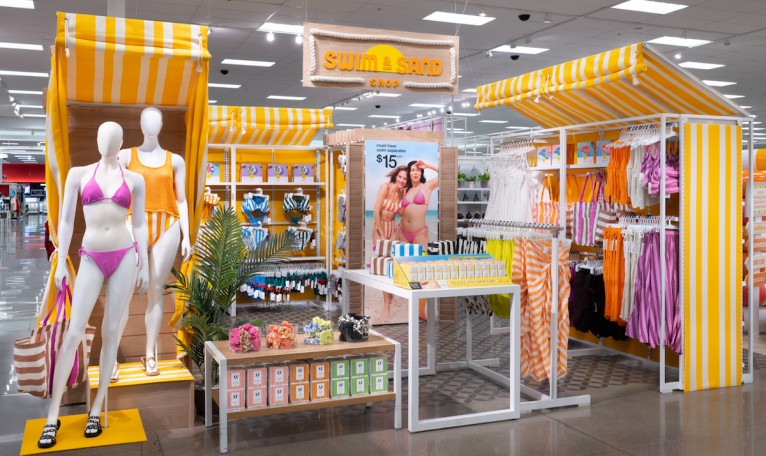Shoppers’ Demand for Affordability Shapes Target’s Summer Strategy

As consumers’ shopping behavior continues to be highly motivated by prices, Target is tailoring its summer assortment to these deal seekers’ interests.
The retail announced Thursday (May 23) 1,000 new summer items, touting their low prices — a move that came days after the company announced plans to lower prices on roughly 5,000 “frequently shopped items,” including grocery staples. The new assortment includes swimwear, pool accessories, seasonal snacks, sunscreen and other warm-weather goods.
“Our summer assortment is about bringing together everything people love about summer at Target and making it even easier to shop, even more joyful and even more affordable,” Jill Sando, the retailer’s executive vice president and chief merchandising officer of apparel and accessories, home and hardlines, said in a statement.
Target is not the only major retailer going all in on pricing. Walmart CEO Doug McMillon told analysts on the company’s earnings call earlier this month that the retail giant has rolled back prices on nearly 7,000 items.
Indeed, prices are top-of-mind for many shoppers. The February/March installment of the PYMNTS Intelligence “New Reality Check: The Paycheck-to-Paycheck Report” series drew from a survey of more than 4,200 U.S. consumers. The results revealed that half of consumers have downgraded to less expensive merchants in response to inflation. Plus, 45% of low-income (those who earn less than $50,000 annually), 41% of middle-income ($50,000-$100,000) and 28% of high-income (more than $100,000) shoppers said they had switched to lower-quality products to save on cost for the same reason.
Moreover, a PYMNTS Intelligence study last year revealed that 46% of retail shoppers are deal chasers, primarily motivated by where they will get the best bargain.
“Ongoing uncertainty in today’s macroeconomic and geopolitical environment, including prolonged inflation, continue to squeeze our low- to moderate-income customers’ purchasing power,” Ross Stores Executive Vice President and Chief Financial Officer Adam Orvos said during a call with analysts Thursday (May 23).
Similarly, Macy’s Chairman and CEO Tony Spring noted on the company’s earnings call last week that the retailer’s customers continue to feel financial pressure, prompting them to “carefully scrutinize their discretionary purchases.”
Plus, “The Pessimism About Pay Rises Offsets the Effect of Falling Inflation” edition of “The Paycheck-to-Paycheck Report” series found that 83% of consumers express concern about the near-term economic conditions, and more than half expect inflation to accelerate this year.
In fact, a small but significant share of consumers even has to dig into their savings to afford basic necessities. “The Pessimism About Pay Rises Offsets the Effect of Falling Inflation” edition revealed that, among the 13% of consumers who expect their savings to decrease this year, 7 in 10 expect to spend this money on essential expenses. In contrast, only 30% said they would spend their savings on discretionary expenses.
Notably, however, as retail giants look to attract and retain deal chasers, they are also trying to grow their share with high-income shoppers with cash to burn. Take, for instance, Target’s designer collaborations or Walmart’s Walmarche strategy (as described by PYMNTS’ Karen Webster), piloting a new merchandise mix and fancier displays aimed at higher-income shoppers.